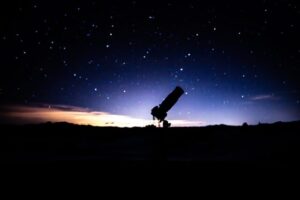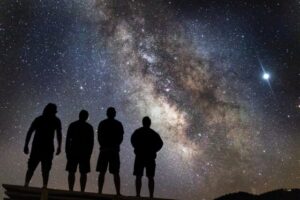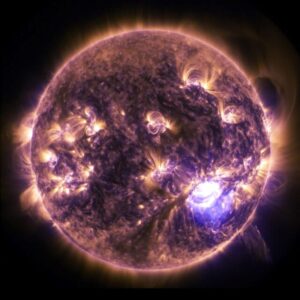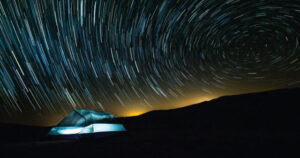An illustration to explain the dynamics of the ultra-relativistic third Van Allen radiation belt, by Andy Kale. Credit: Andy Kale
Earth's magnetosphere, the region of space dominated by Earth's magnetic field, protects our planet from the harsh battering of the...
K2-33b, shown in this illustration, is one of the youngest exoplanets detected to date. Credit: NASA/JPL-Caltech
Astronomers have discovered the youngest fully formed exoplanet ever detected. The discovery was made using NASA's Kepler Space Telescope and its extended K2 mission,...
Venus' electric wind. Credit: NASA/Conceptual Image Lab.
Venus has an 'electric wind' strong enough to remove the components of water from its upper atmosphere, which may have played a significant role in stripping the planet of its oceans, according to...
This artist's impression shows a hot Jupiter planet orbiting close to one of the stars in the rich old star cluster Messier 67, in the constellation of Cancer (The Crab). Astronomers have found far more planets like this in...
No one has yet observed the first stars that formed in the Milky Way. In all likelihood, they will never be directly observed, because the first stars are massive, ending their lives only a few millions years after their...
Gemini South GeMS/GSAOI near-infrared image of the N159W field in the Large Magellanic Cloud. The image spans 1.5 arcminutes across, resolves stars to about 0.09 arcseconds, and is a composite of three filters (J, H, and Ks). Integration (exposure)...
Carina Nebula. Credit: NASA
If you’re expecting to hear from aliens from across the universe, it could be a while.
Deconstructing the Fermi paradox and pairing it with the mediocrity principle into a fresh equation, Cornell astronomers say extraterrestrials likely...
Light from ionized oxygen detected by ALMA is shown in green. Light from ionized hydrogen detected by the Subaru Telescope and ultraviolet light detected by the UK Infrared Telescope (UKIRT) are shown in blue and red, respectively. Credit: ALMA...
A meteorite discovered in a Swedish quarry is unique and distinct from other meteorites. It appears to be a relic of a massive collision in the asteroid belt 470 million years ago that send debris raining to Earth during...
The first images of CaSSIS show the Tharsis face of Mars at a resolution of 460km/px. The image was taken from a distance of 41 million kilometers.Credit: The resolution is expected to exceed the resolution of Hubble’s Pictures already...
Northwestern University astrophysicists have predicted history. In a new study, the scientists show their theoretical predictions last year were correct: The historic merger of two massive black holes detected Sept. 14, 2015, could easily have been formed through dynamic...






















